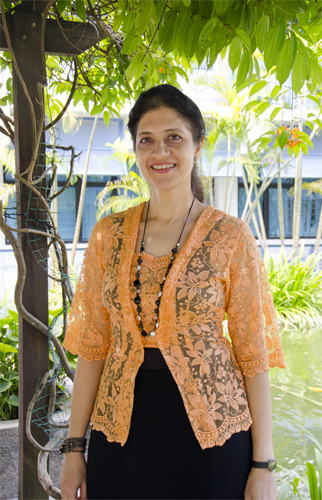Why Singapore’s English Teachers Should Embrace Singlish, Not Fight It
Is it time for Singaporean educators to embrace Singlish as a legitimate learning tool? What the Research […]
Read More
Learning happens at home and revision takes place in the classroom – the conventional way of learning has been reversed for students in Yishun Secondary School in their flipped classroom.
 “Our students study and interact with each other in ways that are so different from what we did when we were growing up,” says Mrs Simmi Govindani, a Lead Teacher from Yishun Secondary School. “These changes are, to a great extent, brought about due to technological advances and Web 2.0 tools that are so pervasive nowadays.”
“Our students study and interact with each other in ways that are so different from what we did when we were growing up,” says Mrs Simmi Govindani, a Lead Teacher from Yishun Secondary School. “These changes are, to a great extent, brought about due to technological advances and Web 2.0 tools that are so pervasive nowadays.”
Hence, there is a need for teachers to evolve, and explore new and innovative ways to engage these digital natives.
During the weekly timetabled sessions in school, Simmi led a group of Math teachers to explore innovative teaching pedagogy in the form of flipped classroom. It was then introduced in her Secondary 3 Express Elementary Math (E Math) and Additional Math classes.
One of the aims of the flipped classroom is to cultivate intrinsic motivation and the spirit of independent learning in students. In other words, students are made aware that they can learn through multiple resources – even without the teachers.
Pre-recorded lessons, online videos and quizzes – these are some of the main ingredients of a flipped classroom.
By harnessing the affordances of such technology through the school’s Learning Management System (LMS), it was possible for Simmi and her colleagues to engage and stretch their students further. The online quizzes also allow them to receive immediate feedback on their learning
“We started small with topics like Inequalities and Cumulative Frequency Curves in E Math via the Math LMS portal,” Simmi shares. Eventually, she started to record herself teaching the topic on Binomial Theorem and uploaded the video on YouTube. Back at home, students watched these videos to understand the content.
“By allowing students to study at their own pace at home, the weaker ones were able to understand the concepts better because they could ‘rewind’ me,” she adds.
The next day, the teacher will facilitate the students learning in class through appropriate questioning, which help to clarify their doubts and consolidate their learning.
Not only does the flipped classroom allow for more time for students to clarify their doubts and more space for student–teacher interaction, it also inculcates the spirit of wanting to learn – even when they are not in the classroom.
However, this change does not happen overnight. For Simmi, she believes that having a positive mind-set in both teaching and learning helps.
By allowing students to study at their own pace at home, the weaker ones were able to understand the concepts better because they could “rewind” me.
– Simmi Naresh, Yishun Secondary School
“By introducing our students to the vast technological resources available online, we hope to make them self-directed learners, problem solvers and future-ready,” Simmi says. ”They will see that it’s not just about the teachers.”
This helps open their minds to the idea that their teachers are not the only people who can help them study and learn new things.
Back in the classroom, Simmi also noticed that some of her better students were able to help their weaker peers – a form or collaboration and peer tutoring that Simmi believe is a great learning experience for them. It also helps build their teamwork abilities and frees the teacher to give more one-to-one instruction.
If there is one surprise that students have with the flipped classroom, it is definitely discovering that learning is possible anywhere. In fact, some of them even realize that they can learn well on their own!